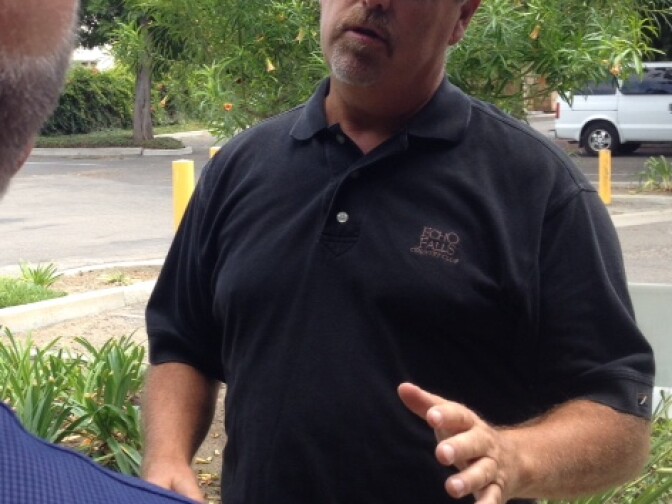Truth matters. Community matters. Your support makes both possible. LAist is one of the few places where news remains independent and free from political and corporate influence. Stand up for truth and for LAist. Make your year-end tax-deductible gift now.
This archival content was originally written for and published on KPCC.org. Keep in mind that links and images may no longer work — and references may be outdated.
PPO, EPO, or HMO? Your health plan choices explained.
The recent release of California's 2015 health insurance rates for plans that will be sold through the statewide marketplace, Covered California, offers consumers a jump start on shopping for next year’s policies. The following is a guide to help sort through the differences among EPOs, PPOs, and HMOs.
Step one is to fight the natural inertia that can lull you into staying with a health plan that may not be the best fit, says Larry Levitt, senior vice president with the Kaiser Family Foundation, which is not affiliated with the Kaiser Permanente Health Plans.
"There are lots of reasons to shop around, particularly this year," he says.
That’s in large part because the newly released rates for next year’s individual and family plans include some significant price swings from 2014 prices.
"Some plans are increasing premiums, some plans are decreasing premiums," he says. "So you could find yourself saving a lot of money if you switch plans."
To do that, you've got to tackle step two: understanding the basics of the three main types of policies on the market. These days, it means differentiating among the PPOs, HMOs and the lesser-known EPOs, which are becoming more prevalent.
"An EPO stands for an exclusive provider organization," says Levitt. "And an EPO is much like a PPO in that you have a fair amount of flexibility in how you use your services."
Meaning you can, among other things, make appointments directly with providers - no prior physician referral necessary. But, Levitt says, the plans offer extremely limited provider networks and they require you stay in-network for your care.
"If you’re in an EPO and you go outside the provider network, you’re going to have to pay 100 percent of the bill yourself," he says.
That’s quite different from the gold-standard of insurance plans: the PPO. These “preferred provider organizations” are usually the most costly. That’s because they offer the most flexibility; higher levels of coverage when you get care from providers inside the network and some reimbursement for care when you get it out of network.
But this year, a phenomenon called, “narrow networks” has chipped away at the PPO's glossy veneer.
"It’s very uncertain with some of the larger PPOs in the exchange right now exactly what network you are purchasing," says Bill Barcelona, a senior vice president of government affairs at the California Association of Physician Groups, CAPG.
That’s in part because insurers these days are relying more heavily on narrowing their provider networks as a way to save money.
And this year, the state’s biggest PPO plans made the problem worse by publishing inaccurate provider lists. That’s left consumers like Robert Sjoquist footing a much larger chunk of their medical bills.
"I went in for my annual check up with my physician -- I’ve been doing this for 28-29 years with the same doctor-- and showed him my insurance," Sjoquist says. " They looked and it and said, ‘Oh yeah, no problem.’"
But then, after seeing the doctor, the office manager informed the Ventura County business owner that his Anthem Blue Cross plan no longer recognized the doctor's practice.
"She goes, ‘Robert, we just found out you’re not covered by your plan for your last visit so the doctor’s preparing a bill - we’re going to take it easy on you but we’re no longer in that network - and we’ve been recognized by them forever," Sjoquist says.
Business owner Pamela Robins experienced a similar problem. It was only after undergoing expensive surgery to repair a broken collar bone, that her providers realized they weren't part of her Los Angeles area Blue Shield PPO.
"I went into admissions, I gave them my card, I was accepted for surgery that day and I had the surgery," she says. "And then I got a bill for $76,000."
Levitt says such stories underscore the need for consumers to - as best they can - check, double check and triple check whether their doctor, hospital or other provider is fully covered in whatever plan they're considering for 2015.
Bill Barcelona of CAPG predicts such confusion may prompt some PPO devotees to consider switching to the least-flexible plan of all: the HMO.
"Unlimited choice really doesn’t do you as much good if you really don’t know where to navigate within the health care system," he says.
Under the HMO – or Health Maintenance Organization – model, your care is strictly limited to the doctors, clinics and hospitals inside the network. And if you want to see a specialist, get an x-ray or other test, you’ll need to first get a referral from your primary care doctor.
A few extra steps, Barcelona says, but when you get that referral, you know you’re covered.
"The point of all that system is that it helps to prevent people from falling through the cracks," he says of HMOs.
And typically, he says, many HMOs are less expensive than PPOs and EPOS.
The 2015 health insurance plans from ten insurance companies are now available for consumers to review on the Covered California website.
Open enrollment for next year’s health policies begins Nov. 15.









